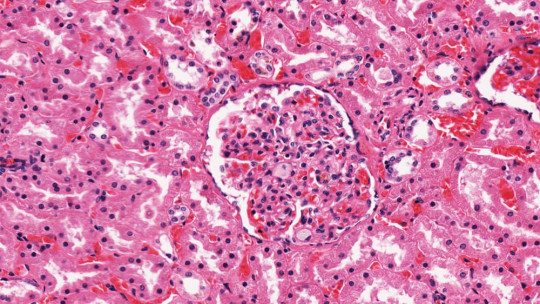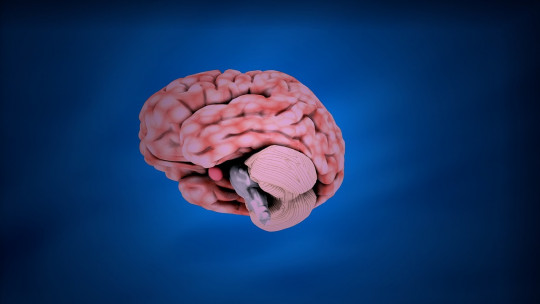
Alzheimer’s disease is a neurodegenerative condition in which the patient suffers from memory problems, as well as symptoms such as confusion, mood swings, personality changes and aggressive behaviors.
Patients diagnosed with this disease become individuals who are very dependent on their social environment, since as the disease progresses, their ability to do the simplest and most everyday tasks fades, as do the memories that made up their lives.
Although most patients with this dementia show the same symptoms, there are different types of Alzheimer’s depending on the severity and other criteria that we will explore below.
What is Alzheimer’s disease?
Alzheimer’s disease is a neurodegenerative condition that brings with it multiple cognitive and behavioral symptoms. This disease usually begins with small memory losses and confusion, evolving to total memory loss, problems in decision making and serious difficulties in performing daily tasks**.
Added to these symptoms, there are also changes in the patient’s personality along with depressive symptoms, mood changes, social isolation and aggressiveness.
It is believed that around 50 million people worldwide are currently living with Alzheimer’s disease.. It is expected that by 2050 the number of cases worldwide will reach 131 million. This disease is one of the first ten causes of death in most developed countries, since the population is aging and this neurodegenerative condition is more common when people are over 65 years of age. In the particular case of Spain, there are records of about 800,000 cases of the disease.
Although age is considered a risk factor for Alzheimer’s, The symptoms associated with this disease are not a simple result of aging.. Genetics and lifestyle also play a key role behind the appearance, severity and progression of this neurodegenerative disease, although it is not known exactly to what extent and in certain subtypes of Alzheimer’s.
From neuroscience, many theories have been proposed to explain the reasons for the changes that occur at the brain level during the course of Alzheimer’s disease. Despite having a variety of explanatory hypotheses, they do agree that There are two distinctive features of this disease: neurofibrillary tangles and senile plaques..
Neurofibrillary tangles are abnormal structures composed of the Tau protein, a substance that makes up the cellular cytoskeleton.
Senile plaques are structures composed of aggregates of beta-amyloid protein and cause interference in cellular communication, eventually causing the death of neurons.

What types of Alzheimer’s exist?
There is a diversity of opinions in the scientific community not only when it comes to talking about the different types of Alzheimer’s that seem to exist, but there is also a debate about whether Alzheimer’s can be classified as a dementia in itself or as the cause of a. There is no doubt that it is a brain disease, but there are those who consider that rather than being a type of dementia, it would be the biological cause of what causes dementia.manifested in cognitive and behavioral symptoms.
Experts who consider Alzheimer’s disease to be a genuine dementia classify it along with other types of dementia. neurodegenerative diseases in which cognitive and behavioral deterioration occurs:
According to the current knowledge available about Alzheimer’s disease, it can be classified into different types, taking into account as criteria the degree of severity, the type of inflammatory response and the onset or trigger that causes the disease.
Depending on the severity
These are actually phases that a person with this neurodegenerative condition usually goes through, and it is normal to go from mild to severe Alzheimer’s. Diagnosis is crucial to control the disease, since the sooner the patient with this type of dementia is diagnosed, the more likely it is to treat it effectively and prevent symptoms from progressing rapidly.
Depending on the intensity of the typical symptoms of Alzheimer’s disease, we speak of the following types of Alzheimer’s.
1. Mild Alzheimer’s
In mild Alzheimer’s (Mild Alzheimer’s) signs of cognitive decline begin. The patient has slight problems when doing daily tasks, such as paying bills, putting on the washing machine, driving, working…
Because these symptoms are not very striking or serious, the patient who is in this stage of Alzheimer’s disease continues to function with a certain degree of difficulty, but without requiring help from anyone. He will take a little longer to carry out tasks that he previously did with agility and speed.
2. Moderate Alzheimer’s
In moderate Alzheimer’s (Moderate Alzheimer’s) there is already great neuronal damage, which makes the symptoms of the disease become more intense. The patient suffers more severe episodes of confusion and, due to greater memory loss, begins to require more and more help. until you become a dependent person.
Although the patient may remain physically agile, not being able to carry out the simplest routine tasks, it is dangerous to leave him alone or unsupervised. Besides, may suffer hallucinations and failures in processing sensationsand show symptoms typical of delirium, mood changes and aggressive behaviors.
3. Severe Alzheimer’s
As neurofibrillary plaques and tangles of Tau protein begin to spread throughout the brain, nerve cells begin to die. This results in a reduction of brain tissue. Patients with severe Alzheimer’s often end up bedridden and even lose the ability to speak..
Depending on the inflammatory response
Alzheimer’s is categorized into three types based on the inflammatory response.
1. Inflammatory Alzheimer’s
In addition to presenting the characteristic cognitive and behavioral symptoms of the disease, inflammatory Alzheimer’s It presents as a distinctive feature a high ratio of serum albumin to globulin and a high level of C-reactive protein in response to inflammation.characteristic biomarkers of this physiological process at the brain level.
2. Non-inflammatory Alzheimer’s
Non-inflammatory Alzheimer’s does not present high accumulations of biomarkers associated with inflammation. However, other typical metabolic alterations associated with this condition may occur, such as neurofibrillary plaques and tangles.
3. Cortical Alzheimer’s
Cortical Alzheimer’s is caused by a deficit in zinc levels in various regions of the brain.. Although there is no inflammatory response associated with this subtype, this causes alterations in normal brain function which give rise to the characteristic symptoms of Alzheimer’s disease.
Classification according to the onset and what triggers the disease
It is considered that there are two types of Alzheimer’s depending on the age at which it appears, plus a third type depending on whether it is suspected that there could be heritability among family members to present this dementia.
1. Early Alzheimer’s
We say that Alzheimer’s is early-onset Alzheimer’s. when it is diagnosed before reaching 65 years of age. These are very rare cases, occurring in only 5 out of every 100 Alzheimer’s patients, and the first symptoms can occur as early as 40 or 50 years of age.
Various factors have been considered to explain the appearance of early Alzheimer’s, although it is believed that the most important would be a defect in chromosome 14. People with Down syndrome are prone to this type of Alzheimer’s.
2. Late Alzheimer’s
Most cases of Alzheimer’s present the disease after reaching the age of 65, being called late-onset Alzheimer’s. This type of Alzheimer’s is the most common, accounting for about 95% of cases of people with the disease..
It is not known exactly what the genetic trigger is behind the appearance of late Alzheimer’s, although it is considered that there would be a combination of genetic and environmental (epigenetic) factors.
Lifestyle and experiences throughout it influence the possibility of suffering from Alzheimer’s. Risk factors are having a stressful life, taking drugs, smoking, alcoholism, eating a poorly varied and healthy diet, being sedentary and being cognitively inactive.
Although it cannot be said that Alzheimer’s is a 100% preventable condition, it is true that maintaining a healthy lifestyle, exercising, eating a healthy diet, avoiding the consumption of harmful substances and putting our brain to the test can help. to prevent Alzheimer’s and its early onset.
3. Familial Alzheimer’s disease
The existence of another subtype of Alzheimer’s disease called familial (familial Alzheimer’s disease or FAD) has been proposed. This condition would be extremely rare.occurring in 1 in 100 patients with this neurodegenerative dementia.
A person can only be diagnosed with FAD if they have a specific genotype of the disease, i.e. that in your family there is a specific gene for Alzheimer’s and that he or she has it.
Thanks to this, it is possible to detect if a family member could have Alzheimer’s through a genetic analysis to see if they have the gene that causes the disease, making it possible to calculate the exact risk of suffering from this dementia.








